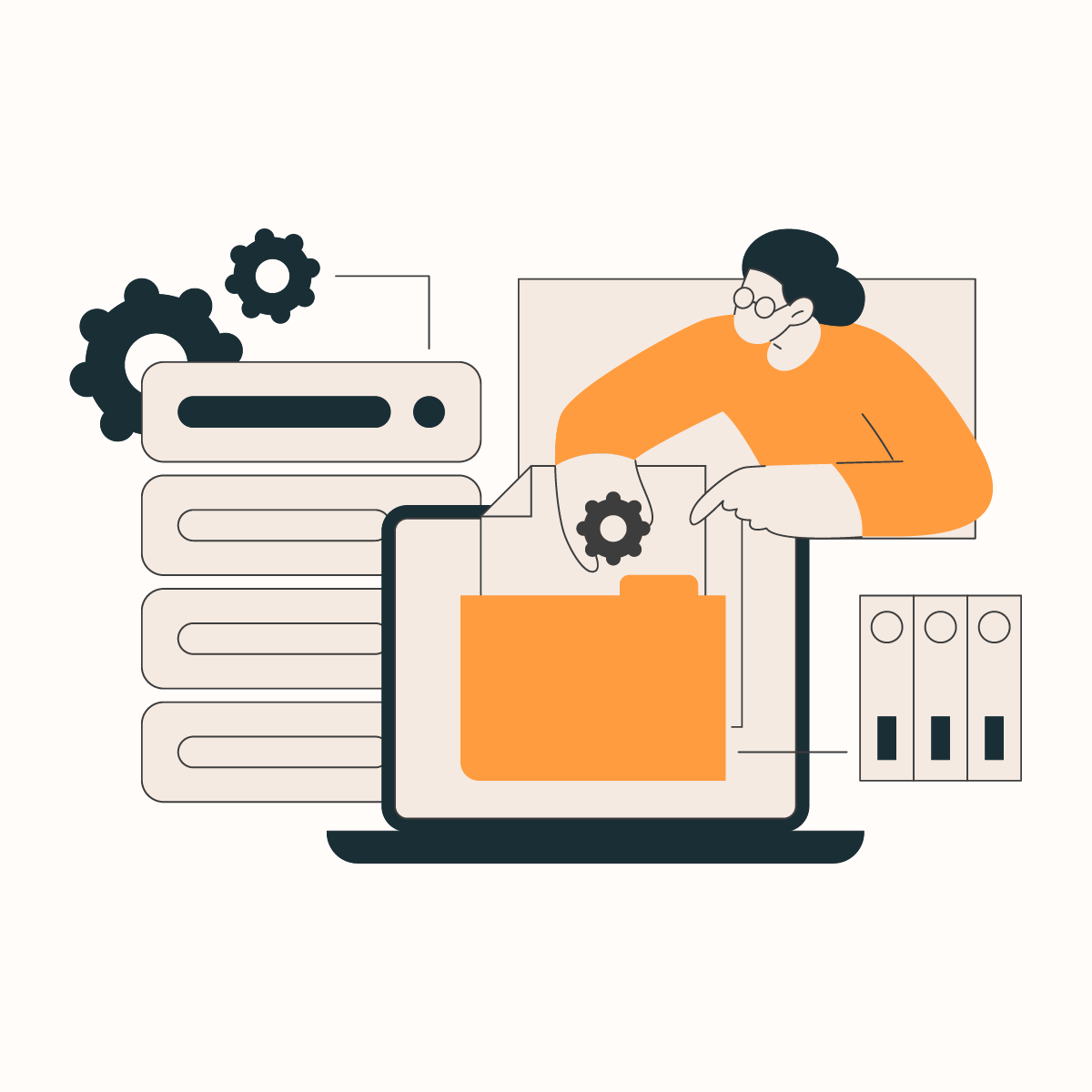Introduction To Soft Data & Hard Data
Data has become the new gold as many individuals and businesses rely on it to make critical decisions. It goes beyond a piece of information that was extracted and readily available for use. Good quality data is reliable, accurate, and presented in a format that is easy to read. Therefore, you can present your data in graphs, bar charts, histograms, tables, or pie charts so that decision-makers can get an overview of the next steps to ensure the organization thrives.
While there are numerous forms and types of data, we shall focus on the two traditional categories- soft data vs hard data. Therefore, this guide will explore soft data vs hard data, the differences, similarities, their characteristics, and the best data scraping solution.
Let’s dive in.
What is Soft Data?
Soft data is subjective in nature; it lacks precision, so it is interpretive. In other words, it is qualitative, descriptive, and used to explain concepts. Subsequently, soft data does not follow the usual research process.
Also known as qualitative data, the precision of soft data is hard to measure. This is because it includes opinions and feelings of people, which are not standard variables. Soft data usually originates from semi-scientific methods, including surveys, reviews, or interview transcripts. Therefore, soft data provides meaningful insights into the human factor driving decision-making.
Soft data is almost impossible to quantify; therefore, it has a bad reputation among statistical experts. It is based on sentiments, impressions, assumptions, opinions, and interpretations by humans, which does not make it 100% reliable. However, soft data is commonly used to complement hard data as it provides a deeper insight into human emotions. Subsequently, this can be utilized to build a strategy that resonates with the emotional needs of the consumers.
Common sources of soft data include interviews, focus groups, open-ended survey responses, and social media comments. While soft data may lack the empirical precision of hard data, it adds depth to data analysis by offering a more nuanced understanding of customer preferences, employee satisfaction, or market trends. In many cases, soft data is used to complement hard data, providing context and meaning that numbers alone cannot offer. It is particularly valuable in fields like marketing, human resources, and customer service, where human experience and sentiment play a significant role in shaping decisions.
There are various ways to obtain soft data, and they include:
Data obtained from the internet
One of the places to obtain soft data is the internet. You can leverage web scrapers or APIs to collect social media posts, product reviews, comments, etc. The internet holds a lot of information that can be organized, analyzed, and interpreted to make informed decisions regarding pricing, outreach, product design, and more.
Data obtained from interviews
Another way to obtain soft data is through interviews, which are often one-on-one interviews. Open-ended questions are often asked in interviews, so they are more conversational, and you can get the most from the respondents. It is in the form of one-on-one conversation, where a question can lead to other forms of questions.
This method usually provides a comprehensive perspective of the subject. Characteristics obtained from this method include knowledge, attitude, perception, factors influencing certain decisions, and other forms of subjective information.
Focus group discussions
Focus groups usually comprise 6-10 individuals and a moderator who discusses a particular concept. The individuals making up the focus group usually have a common trait. This could include age, sex, demographics, etc. This method of data collection aims to get more knowledge on a particular subject.
Incognito Research
Incognito research involves living in the same conditions as the study participants. Therefore, researchers can conduct various interviews at different times without explicitly telling the other person the aim is to gather data.
Case studies
This method of collecting soft data involves a comprehensive analysis of past events to inform present decisions. Case studies are useful for simple and complex situations.
Soft Data Examples:
Soft data can be gathered through various methods that capture subjective insights. For instance, conducting interviews allows researchers to delve into individual experiences and opinions, providing rich, detailed information. Focus groups facilitate discussions among participants, revealing collective attitudes and perceptions about a product, service, or issue. Open-ended survey questions enable respondents to express their thoughts in their own words, uncovering motivations and feelings that structured questions might miss. Additionally, analyzing social media comments can offer real-time feedback and sentiment analysis, reflecting public opinion and emerging trends. These examples illustrate how soft data provides valuable context and depth, complementing quantitative analyses to inform more comprehensive decision-making.
What is the Significance of Soft Data
Although soft data is largely based on feelings and personal experiences or preferences, it has several benefits for businesses, academicians, and governments. Here are some of the reasons why you may need to collect soft data:
Basics of in-depth research
Soft data forms the foundation for comprehensive research. Since the data is subjective, it largely represents the feelings of the participants. However, the interpretation may vary depending on the researcher’s understanding of the concept. Therefore, data analysts must acknowledge the possibility of this variability because they can generate different conclusions from different interpretations.
Subsequently, an in-depth understanding of the topic is necessary to make inferences and draw relevant conclusions from soft data. Failure to understand the respondent’s emotions related to the data could cause misinterpretations.
Insight into marketing
Soft data is a type of qualitative data that provides meaningful insights into marketing and advertising. A structured questionnaire may not be as effective as an interview or a focus group discussion when you need insight into consumer perception and behavior. Subsequently, it explores the customer’s motivations, preferences, experiences, and expectations on a deeper level. Therefore, careful analysis of soft data provides insight that informs the marketing strategies on various levels.
Complements hard data
Another significant feature of soft data is that it complements hard data. For example, hard data may provide statistical information on a trend, like a decline in sales. However, you need soft data to understand why there is a decline in sales.
In addition, soft data can either validate or challenge hard data. Subsequently, if there is a wide variation in the conclusion generated from hard and soft data, further observation is required.
Furthermore, a combination of hard and soft data ensures organizations make balanced decisions. This holistic approach to decision-making is necessary to generate effective marketing strategies that could be implemented on a long-term basis.
What is Hard Data?
Hard data, described as quantitative data, is objectively measured and plays a critical role in decision-making. It usually involves data that can be translated into numerical values that can be analyzed and visualized for easy comprehension by those who need to make decisions. In other words, this data is based on observable and measurable factors instead of personal feelings. Therefore, this makes hard data a credible source of insight for making crucial organizational decisions.
This type of data is derived from concrete facts and figures, making it reliable and less susceptible to interpretation or subjectivity. Hard data is characterized by its ability to be measured in quantifiable terms, making it easy to analyze and compare. It is commonly used to validate or prove a hypothesis, providing a solid foundation for decision-making processes. Examples of hard data include sales figures, website traffic statistics, and demographic information. While hard data provides clear, empirical evidence, it may not capture the underlying reasons behind the numbers, which is where soft data becomes valuable.
Examples of Hard Data
Hard data encompasses a wide range of measurable information. For example, sales figures such as units sold, profit margins, and revenue provide concrete metrics of business performance. Web analytics data, including bounce rates, website traffic, and click-through rates, offer quantifiable insights into online user behavior. Operational metrics like production numbers, cycle times, and defect rates are essential for assessing efficiency and quality in manufacturing processes. Demographic data, such as age, income, and education level, provide statistical profiles of populations. These examples highlight how hard data serves as a factual basis for analysis, enabling organizations to track performance, identify trends, and make informed decisions.
Why Businesses Rely on Hard Data
Hard data is significant for various purposes. Here are some benefits your business can get from hard data:
Provides validated information.
One of the advantages of using hard data is that it provides information that is based on facts. Since it is sourced from quantitative sources, the information is often concrete and factual. Regardless of the industry, hard data is crucial to support arguments, validate theories, and make conclusions. Subsequently, hard data provides a means to validate decisions. Therefore, each decision, regardless of the magnitude of the impact, is backed by data. In addition, hard data plays a significant role in supporting reliability and credibility.
Statistical data
Another significant reason why businesses choose hard data is that it provides statistical information. Subsequently, hard data provides statistics that can be visually represented in graphs, tables, or charts, making it easy to understand complex concepts. Therefore, decision-makers do not have to spend several hours trying to comprehend data. For example, if the data is represented in a bar chart, you can easily understand the point within a few minutes.
Forecasting and prediction
Hard data is crucial for forecasting and prediction. It provides historical data in a format that is easy to read such that it can be analyzed to predict future trends. Governments, businesses, and stock traders, among many others, rely on hard data to make plans with the most benefit for the future.
In addition, hard data is useful for adjusting operational strategies. Since hard data provides measurable metrics, it can be used to evaluate the effectiveness of strategies. Therefore, businesses can adjust and optimize their strategies based on hard data.
Identify trends and patterns
Trends and pattern identification depend on hard data. Therefore, data analysts can study past patterns and predict future trends. As a result, hard data provides insights that allow you to take data-driven insights. Trends and patterns tend to recur, and you may be unable to catch them if you do not expect them. However, you cannot expect trends if you have not identified a pattern that is backed by data.
For example, the marketing team can leverage pattern identification to determine the behavior of the target audience toward a certain product or service.
Categories of Hard Data
Hard data can be categorized into two broad groups based on sources (from research and technology) and collection methods (primary and secondary data).
Secondary data
This method of collecting hard data requires the researcher to extract information from credible sources like scientific reports, news, books, journals, and others. Secondary data can be described in simple terms as data that the researcher did not personally collect. Instead, it leverages the results obtained from similar studies within the same field. Since there are several sources of secondary data, it is important to make a decision based on predefined criteria. Thus, it plays a significant role in the reliability and validity of collected data. Some of the criteria for choosing a secondary source of data include author, date of publication, Citation, and other factors. Subsequently, these factors help you choose the right set of documents to include in your research.
Secondary data is easy to collect and use. This is because you don’t need to sort the raw data; instead, you can. In addition, it is a cost-effective option if you don’t want to spend a lot of money on your research work. While secondary data collection is less time- and effort-consuming, it doesn’t produce any fresh and unique data, thus not contributing significantly to the research expansion.
Primary data
Primary data is another type of data based on collection methods. In simpler terms, primary data collection involves gathering fresh data via various statistical techniques. These methods include observation, polls, structured interviews, questionnaires, or surveys that are used to generate quantitative data. Once the raw data has been collected, it is then analyzed and interpreted, and the findings are presented via graphical descriptions.
One of the advantages of the primary data collection method is that it is reliable and often free from errors and bias. Collecting primary data involves scientific procedures that ensure the credibility of the data. In addition, primary data often provides insight that can be applied on a larger scale because the sample is representative of the target population.
Technology derived hard data
This category of data involves all the data extracted from machines. These machines include smartphones, computers, meters, and any other device that uses advanced technology to store data. Subsequently, this data is considered reliable and accurate because these devices are calibrated and come with software that ensures they work as intended.
Hard data derived from research
This category of data is obtained via scientific methodology. Data collected from research is often structured, reliable, and credible. This is because studies are carried out by professionals who understand the steps required to ensure the credibility of any data they obtain. Studies could be simple, like using questionnaires and surveys, or complex, involving experiments that involve several processes required to achieve the aim of the research.
Soft Data vs Hard Data: Similarities
Before we dive into the differences between soft data and hard data, let us briefly look at some similarities. The synergy of soft data and hard data makes it possible to apply them in understanding complex situations. Here are some similarities:
Source of information
Although soft data and hard data are obtained from distinct sources, they provide information that can be analyzed and interpreted for several purposes. Subsequently, both data types offer distinct perspectives on situations that could support decision-making.
In addition, hard data provides concrete evidence and informs decisions. Likewise, soft data offers contextual insights that optimize the process of decision-making. It allows decision-makers to weigh their options by blending the inference from these two types of data.
Dynamic data
Although hard data is objective and soft data is subjective, they are both dynamic in nature. Therefore, updating the soft data and hard data ensures you have access to the latest information to make the best decision for your business.
For example, the number of sales within every quarter is subject to a change of figure. Likewise, the reason for this change also varies; it could be counterfeiting, price, or other competitive products. Therefore, you must ensure that the soft and hard data are updated to avoid making critical decisions based on old data.
Inform strategy
A holistic business strategy can only be generated with the use of soft and hard data. Therefore, hard and soft data are critical in influencing operational strategy. For example, hard data, such as financial data, can provide figures for past trends. Likewise, soft data helps you understand the human emotions behind these figures. As a result, you get a bigger picture of the situation so you can generate the best strategy for your business operations.
Analysis
Another similarity between hard and soft data is the need to choose a good analysis method. The method you use in communicating your findings, either hard or soft, is critical to understanding. Therefore, you need to communicate your findings in a clear manner so that they can appropriately be used as insights for decision-making.
Soft Data Vs. Hard Data: Differences
While hard data and soft data largely complement each other for holistic decision-making, there are quite a few differences. They include:
Nature of question
One of the most significant differences between soft and hard data is the nature of the question. Close-ended questions are often used to gather hard data; they often require concrete and straightforward responses. In addition, the questions often revolve around who, what, and when.
On the other hand, open-ended questions are used to gather soft data. These questions aim to understand the why associated with a phenomenon.
Type of information gathered
Another major difference between soft data vs hard data is the type of information gathered. While hard data focuses on information that is measurable and proveable, soft data usually focuses on opinions, sentiments, personal feelings, and perceptions.
Source
The type of information gathered depends on the source of data. Hard data is usually collected from quantitative research, whereas soft data comes primarily from qualitative sources.
In addition, hard data are often structured as they are usually derived from structured sources like databases. Therefore, they are concrete and factual. Meanwhile, soft data can be obtained from websites, reviews, social media posts, and many more. Therefore, it becomes critical to use a reliable web scraper API to facilitate the process of internet data extraction.
Generalization
The ability to generalize, that is, assume that the data obtained from a fraction of the population is applicable on a higher scale, is another significant concept associated with soft data vs hard data.
Since hard data comes from quantitative sources, it is more credible and reliable. In addition, it is based on mathematical calculations and numbers which can be generalized and used as a representative of a larger population.
On the other hand, generalizing soft data may not be the best course of action because different people have different ideas and experiences that play significant roles in shaping their sentiments. For example, people from certain demographics may appreciate a product with a high spice level while other demographics won’t. Therefore, collecting soft data from one demographic and assuming the fact is true for all other consumers is a big error that could cause a decline in sales.
Application
The use case of soft data vs hard data significantly differs. Since hard data is made from statistical calculations, it can be used to make accurate analyses. However, soft data, on the other hand, aims to explore the “why” behind the statistical figures we are working with to make critical business decisions. Hard data is most popularly applied in technical, scientific, and financial fields where high precision and accuracy are demanded. Meanwhile, soft data is more often used in social sciences, human-centric studies, and market research, where the output may be left open to interpretation.
A Reliable Solution For Obtaining Data: NetNut
Regardless of the size of your business or the number of workers, your business requires access to reliable and timely data. Some of the challenges with web data extraction include IP block, geographical restrictions, browser fingerprinting, and CAPTCHAs. One of the best practices for collecting web data is the use of proxies- they serve as an intermediary between your device and the internet.
NetNut is a leading proxy provider with an extensive network of over 52 million rotating residential proxies in 195 countries and over 250,000 mobile IPS in over 100 countries, which helps them provide exceptional data collection services.
Here are some reasons to choose NetNut
Bypass CAPTCHAs and IP blocks
CAPTCHAs and IP blocks are two of the most common challenges with web data extraction. However, you can easily bypass them with NetNut proxies that come with a built-in CAPTCHA-solving mechanism. Therefore, these proxies are ideal for large projects offering speedy data retrieval.
Bypass geographical restrictions
You can use NetNut proxies to collect data from any location in the world. It allows you to bypass geographical restrictions, allowing you to access relevant data without any hindrances. With over 195 ISP partners, it supports granular targeting down to city/state levels and all languages.
Scraper API
NetNut has a specialized solution- SERP Scraper API, which is designed to provide an easier and more effective solution for search engine result page data extraction. NetNut SERP scraping API stands out because it can handle big demands, which makes it perfect for large projects without compromising on speed.
Collect data in a structured format
Using NetNut Scraper API ensures you don’t struggle with unstructured data. Instead, you can specify the format you want the data to make analysis easier. In addition, you can retrieve customized data in JSON or HTML format via our API.
Data storage
Data storage is a crucial aspect of collecting data regardless of its source. NetNut offers a solution that allows you to store data in your cloud storage. This is a secure option, and you can easily access it when you need it. In addition, NetNut stands out for its flexibility and customization, which ensures your data is saved in your preferred storage.
Bypass IP blocks
NetNut rotating residential proxies are your automated proxy solution that ensures you can access data without IP blocks. NetNut provides a large pool of residential IP addresses so that you can always have a new one. Consequently, this helps to prevent browser fingerprinting, which can lead to IP blocks, especially when you send too many requests. Moreover, if you need customized web scraping solutions, you can use NetNut’s Mobile Proxy.
Conclusion
The discussion of soft data vs hard data has become very crucial as businesses of all kinds rely on data to make informed decisions. Hard data is measurable data that gives you a simple and concise picture of numbers and trends. On the other hand, soft data provides a more comprehensive approach to understanding these trends.
A holistic approach is to combine soft data and hard data to optimize your business strategies. Soft data like social media comments can be scraped to understand public sentiment. Meanwhile, hard data like competitors prices can be used to gain a competitive advantage in the market.
Web scraping is an exceptional technique to obtain soft and hard data on a large scale. However, to avoid anti-scraping measures implemented by websites, you need NetNut proxy solutions.
Are you unsure of how to choose the best proxy solution? Feel free to contact us today to enjoy industry-leading proxy services.
Frequently Asked Questions
What are the characteristics of soft data vs hard data?
Soft data has the following characteristics:
- Soft data is subjective; it reflects the opinions and feelings of the participants. Therefore, it is open to several interpretations based on the researcher’s understanding of the concept.
- An in-depth understanding of the concept is required to make inferences and suitable conclusions from soft data.
- Soft data is a form of qualitative data that can provide meaningful insights into customer perception and behavior.
On the other hand, here are some of the characteristics of hard data:
- The primary feature of hard data is that it is measurable
- Data analysis, interpretation, and visualization is a simple process
- Hard data is objective; hence, it relies on figures instead of feelings
- It is more reliable because it is not susceptible to bias
How does soft data vs hard data affect decision-making?
To make holistic decisions, you need to complement hard data with soft data. Using both types of data allows you to see the bigger picture so you can make well-informed decisions. Hard data is crucial in making strategic decisions fuelled by numerical analysis. In addition, you can measure key performance metrics to assess the effectiveness of your strategy.
On the other hand, soft data allows you to understand the pain or needs of the target audience. It is also beneficial in creating dynamic strategies that can cater to the constantly evolving market structure.
Are there any limitations of soft data vs hard data?
Yes; although these data types have significant advantages to businesses, here are some limitations:
Soft data has the following limitations:
- The questions are often poorly designed
- The participants are poorly selected
- Many people prefer not to be caught saying uncomfortable truth on the record
- The number of participants may not be enough to capture the views of the entire population
Some limitations of hard data include:
- It does not provide an in-depth picture of the concept
- Although hard data is quantifiable, there is some possibility that it can be irrelevant to achieving your goal
- Since there are infinite ways to design a study, the result may be different for each method









